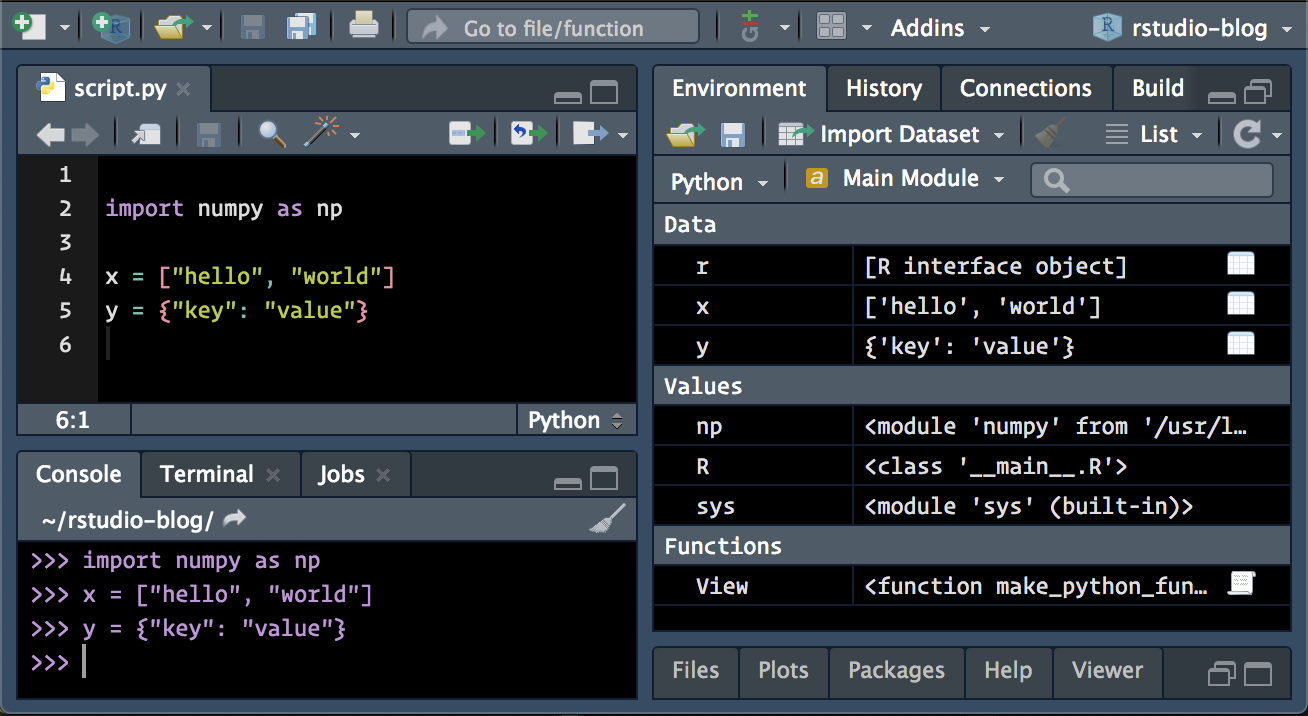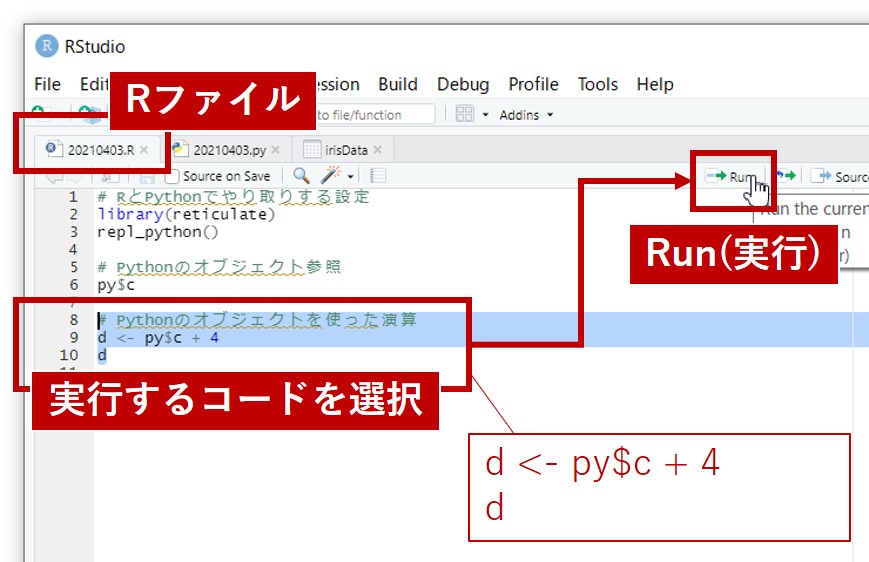

You have to add the ‘.csv’ extension when importing csv files into R The file extension (as highlighted in green) is.The file name (as highlighted in blue) is: MyData.Note, that you can also create a DataFrame by importing the data into R.įor example, if you stored the original data in a CSV file, you can simply import that data into R, and then assign it to a DataFrame.įor demonstration purposes, let’s assume that a CSV file is stored under the following path:Ĭ:\\Users\\Ron\\Desktop\\Test\\ MyData.
R STUDIO PYTHON CODE
Run the above code in R, and you’ll get the same results: Name Age You can achieve the same outcome by using the second template (don’t forget to place a closing bracket at the end of your DataFrame – as captured in the third line of the code below): df <- ame(Name = c("Jon", "Bill", "Maria", "Ben", "Tina"), The values in R match with those in our dataset.

Once you run the above code in R, you’ll get this simple DataFrame: Name Age Note that it’s necessary to place quotes around text (for the values under the Name column), but it’s not required to use quotes around numeric values (for the values under the Age column). Using the first template that you saw at the beginning of this guide, the DataFrame would look like this: Name <- c("Jon", "Bill", "Maria", "Ben", "Tina") The goal is to capture that data in R using a DataFrame. Let’s start with a simple example, where the dataset is: Name
R STUDIO PYTHON HOW TO
Next, you’ll see how to apply each of the above templates in practice. )ĭf <- ame(first_column, second_column)Īlternatively, you may apply this syntax to get the same DataFrame: df <- ame (first_column = c("value_1", "value_2". Python "wars" are crazy.) and we could focus more on solving problems and not on "which language is better" flame wars.Generally speaking, you may use the following template in order to create a DataFrame in R: first_column <- c("value_1", "value_2". also Scala) it would be also great "positioning" for RStudio as the ultimate Data Science IDE & maybe it could even bring communities together (f.e. +Tip/Food for thought: IMHO with support for Python, Julia (or f.e. Jupyter/IPython as data science platform is great, but to have it all in one place and in advanced IDE like RStudio. would you consider also support for Julia in near future? (I mean. That is awesome! Thank you for that! So far for Python I use mostly Rodeo or P圜harm, but it will be great to have both in RStudio.ītw.

It’s never been our goal to make RStudio a fully multilingual IDE, but we’ve improved Python support in every release (check out the integration with the reticulate package if you haven’t already), and have plans for more Python support in 1.2.

There’s not support for it specifically, but since we now have a terminal that you can send lines to, and you can run Python in that terminal, it’s surprisingly usable. In RStudio 1.1, you can use RStudio as a Python REPL.


 0 kommentar(er)
0 kommentar(er)
